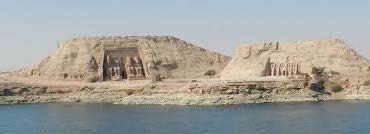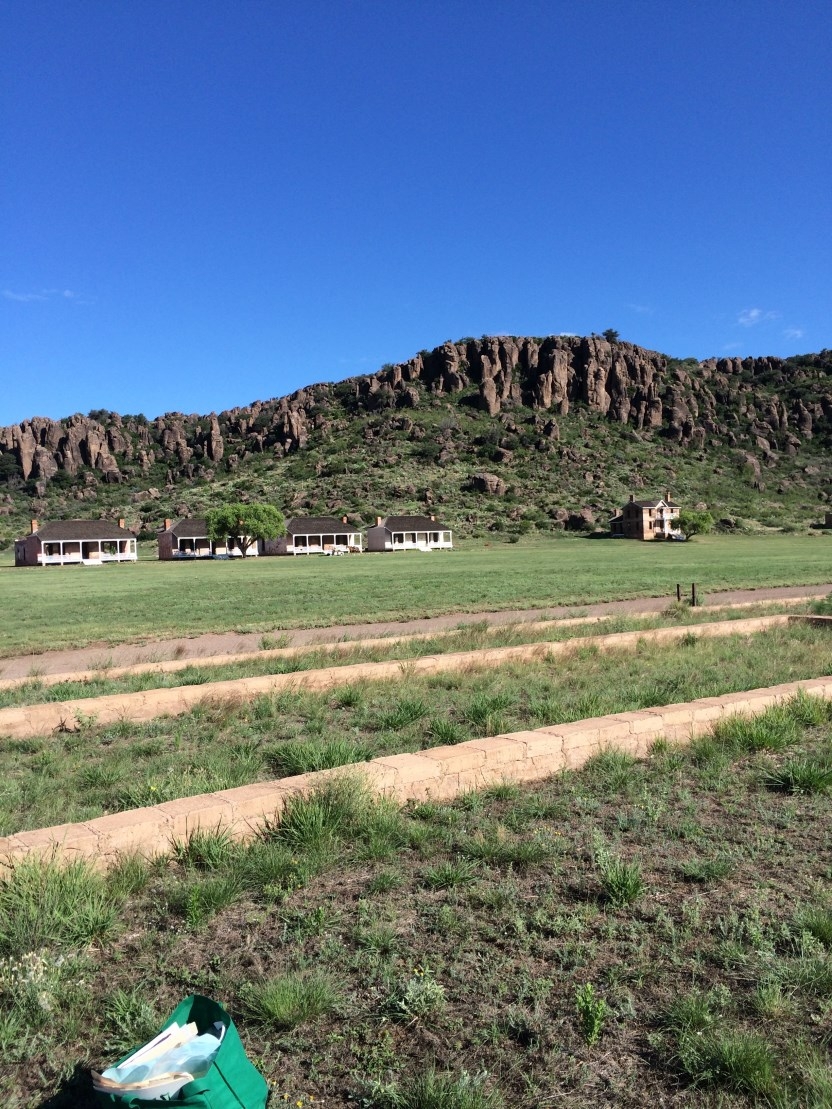Past Events
Interested in Cotsen events? Sign up for our mailing list.Speaker: Dr. Sarah Herr, President, Desert Archaeology Inc.
The cultural affiliation of the pre-contact residents of central Arizona defies easy categorization. These residents of small settlements construct their houses in array of styles, form undecorated ceramic vessels, specialize in projectile point production, and trade other goods rarely but widely, and are not easily encompassed into Hohokam or Puebloan histories. The State Route 260—Payson to Heber project, a cultural
resource management investigation conducted for the Arizona Department of Transportation in advance of highway realignment, provided the opportunity to examine the lifeways of these people who live beyond many boundaries. Trying to understand their experiences provides a starting point for considering the larger issues of how Southwest archaeologists conduct research in areas outside demographic cores.
Contact Matthew Swanson
Email mswanson@ioa.ucla.edu
Phone
Speakers: Society for American Archaeology Executive Committee
This Friday the Cotsen Institute of Archaeology will host the members of the Society for American Archaeology (SAA) Executive Committee for an informal discussion on the implications of recent political transitions for archaeologists in the United States and around the world. The SAA Executive Committee is comprised of the SAA President, President-elect, Secretary, Secretary-elect, Treasurer, Treasurer elect, and the Executive Director. The committee is tasked with taking prompt action on issues that require an immediate response.
The immediate concerns of archaeologists and stakeholders are vast. In academic institutions researchers face potential implications for funding opportunities and relationships with host countries. Both public and private sector cultural resource management institutions are grappling with likely attempts to weaken laws that protect archaeological sites and provide funding for mitigation projects including The National Historic Preservation Act (NHPA), the National Environmental Policy Act (NEPA) and the Antiquities Act.
Please join us for this unique opportunity!
Contact Matthew Swanson
Email mswanson@ioa.ucla.edu
Phone
Speaker: Dr. Alan Sullivan, Professor, Department of Anthropology, University of Cincinnati
Archaeological investigations of the effects of anthropogenic fire on the livelihoods of small-scale societies, particularly those of the prehispanic northern Southwest, are embryonic in scope and disciplinary impact. When burning is mentioned in the literature, the emphasis is on its effectiveness in clearing or deforesting areas for corn farming. In this presentation, I introduce an alternative model that focuses on how woodland-dwelling agricultural populations could be supported by systematic, lowintensity, understory burning that promoted the growth of ruderals -- nutritious plants such as amaranth and chenopodium -- that colonize and thrive in anthropogenic fireniches. With paleoeconomic and settlement data from the Upper Basin (northern Arizona), I propose that considerable numbers of people can be supported by firebased ruderal agriculture in areas that are environmentally hostile to corn farming. Consequently, as archaeologists shift their agro-ecological paradigms from obligate to facultative, they will come to appreciate that ruderals, whose remains dominate archaeobotanical and pollen assemblages recovered from a variety of archaeological and sedimentary contexts in the Western Anasazi region, can no longer be considered inadvertent byproducts of corn farming (“weeds”) but were actively cultivated plants. With these understandings, I suggest that the production of ruderals in anthropogenic pyro-landscapes was a sustainable and ecologically-sound practice that both increased food-supply security and insulated economically-autonomous populations from longterm climatic variability and short-term environmental unpredictability.
Contact Matthew Swanson
Email mswanson@ioa.ucla.edu
Phone
Speakers: Rosa Tamborrino and Paolo Piumatti, Politecnico di Torino
Our visiting scholars from the Politecnico di Torino, will outline the first steps in a new UCLA-Polito collaboration.
The first International large scale UNESCO campaign for preserving world cultural heritage was provoked by a looming catastrophe: the loss of the Nubian Temples under the Nile flood due to the High Aswan Dam. Although the monuments were rescued, the context of the cultural heritage was lost. Nubian temples were moved to higher grounds, other regions and abroad, meanwhile the Nile landscape was changing forever.
This lecture will introduce the ongoing joint research project developed by POLITO and UCLA with the aim to recreate the historical landscape before the change in the Sixties through the research of sources and the use of digital tools and digital humanities methods. The focus of the visualization project is the change to the landscape and the temples, by highlighting the transfer and the relocation, the dismantling and the re-assembly, and finally the new context of these monuments.
The speakers will introduce research themes and purposes, and will show some outcomes of a class on this subject taught to POLITO master students in the past semester.

Contact Matthew Swanson
Email mswanson@ioa.ucla.edu
Phone
Speaker: Dr. Geoffrey Summers, Research Associate, University of Chicago Oriental Institute
Mauritius, a small island nation in the Western Indian Ocean, was uninhabited until the arrival of the Dutch in the 16th century. After the Dutch left it was ruled first by the French and then by the British until independence in 1968. The ethnically and culturally diverse population is descended from slaves, indentured labourers, traders and colonial planters. Archaeology and anthropology are relatively new disciplines. This talk presents an overview of potentials, prospects, and new results of archaeological research in the Key and the Star of the Indian Ocean.
Contact Matthew Swanson
Email mswanson@ioa.ucla.edu
Phone
Speaker: Dr. Agnete Lassen, Associate Curator, Yale University Babylonian Collection
Focusing primarily on seals, this talk will investigate the formations and transformations of social identity in cultural encounters, using the Assyrian merchant colonies in Anatolia as a case. Almost seventy seasons of archaeological excavations at the site of Kültepe in Central Anatolia have revealed the remarkable remains of a thriving city consisting of an acropolis with temples and palatial structures, as well as a surrounding lower town with compact industrial and residential quarters with narrow winding streets, small squares and more than a hundred multi-storied houses; perhaps as many as 25,000 people lived in this multi-cultural metropolis. Life in Kültepe is colorfully evidenced by more than 20,000 cuneiform documents preserved in separate archives found in houses in the city’s lower town. They show that Assyrians, from far-away Assur in present day Northern Iraq, established themselves in merchant colonies to do business with the local elites. Some of these foreigners brought their families or married into the local population, and some even took up local crafts and agriculture. Central to the commercial practices of the time was the use of personal seals to verify economic and legal documents. This talk will focus on seals that were carved in Assur and in Anatolia at the time of the merchant colonies, and investigate how these seal styles interacted with each other, and with the Assyrians and Anatolians who used these seals.
Contact Matthew Swanson
Email mswanson@ioa.ucla.edu
Phone
Speaker: Dr. Pierre Lemmonier, Centre National de Rechereche Scientifique
Technologie culturelle designates the strain in the anthropology of objects and techniques first developed in France in the early 1970s. This approach gives a prominent place to the physical actions of people making and doing things, to the way things are made and physically used, and to technological processes. This talk deals with contemporary methods and results in the field.
After a series of trials, errors, and dead-ends – notably the difficulty of combining Leroi-Gourhan’s methodological propositions with Marxism and structuralism – technologues, and later scholars in “material culture studies” have produced hundreds of useful and remarkable studies of the “effects” of objects and techniques on social life, and analysis of the “style-related” inscriptions in objects (in materials, form, decoration) of identity, power, gender, etc.
For decades, however, when it came to materiality, scholar had simply no idea of the kind of material item – materials, gestures, actions on matter, mechanical principles, physical characteristics, etc. – that might “say” something about a social organization, sets of cultural practices, or representations. In other words, Mauss’ program on techniques: Why and how this way of making, producing, physically using things, here and now? The question of what people do with objects, including “merely” building or reinforcing social relations through the use of artefacts, was left aside.
Recently, a series of scholars showed that some objects, their physical properties, and their material implementation are wordless expressions of fundamental aspects of a way of living and thinking. Those objects and practices are even sometimes the only means of rendering visible pillars of social order that are otherwise blurred, if not hidden. Mauss’ program is at last implemented. But those studies also deal with a very general issue in anthropology: that of understanding the specific ways in which the spheres of our social existence, that we scholars arbitrarily compartmentalize, interact.
It has now been shown how particular objects, in their very materiality and physical use, help the members of a society perceive and share the life they live collectively; how they conceive their unique world of rules and unspoken social givens, their unique system of ideas and ways of doing things, their unique material world, as well as how they conceive itsjustifications. Among other such objects, the talk will focus on Ankave mortuary drums and ceremonies.
Contact Matthew Swanson
Email mswanson@ioa.ucla.edu
Phone
Speaker: Dr. Laurie Wilkie, UC Berkeley
While the black regulars (otherwise known as Buffalo Soldiers) have been a compelling subject in popular culture, scholarly study into the lives of the African American men who chose to serve in the frontier military has been comparatively sporadic and unsustained. This is particularly true in the field of archaeology, where the complexities of preservation and resource management, and associations with US imperialistic policy, have made this soldier demographic an under-explored part of African Diaspora Archaeology. In this talk, I will discuss the unique challenges of military site archaeology, introduce archaeological research undertaken at Fort Davis, Texas, a post where each of the black infantry and cavalry units cycled through during the period of 1867-1885. Focusing on materials associated with the 1869-1875 period of occupation, I will talk about the ways that men of the post navigated a racially fraught landscape while creating a space for new constructions of black manhood in national discourses on citizenship rights, manliness and manifest destiny.

Contact Matthew Swanson
Email mswanson@ioa.ucla.edu
Phone
Speaker: Dr. Mark Aldenderfer, UC Merced
From where and when did people first move into and live permanently the High Himalayas? What role did climate change have in the early peopling of the High Himalayas and in subsequent population movements? These questions are explored in three regions of Nepal: Upper Mustang, the Khumbu, and the Rasuwa valley. Archaeological, paleoclimatic, ethnographic, and historical data are combined to provide a comparative assessment of how the inhabitants of these regions coped with climate variability. Insights derived from this research have relevance to the challenges faced by these peoples today in a context of accelerated global warming.
Mark Aldenderfer is Professor of Anthropology in the School of Social Sciences, Humanities, and Arts at the University of California, Merced. His research focuses the comparative analysis of high altitude cultural and biological adaptations from an archaeological perspective. He has worked on the three high elevation plateaus of the planet—Ethiopian, Andean, and Tibetan—over the course of his career and currently works in the High Himalayas of Nepal. He has edited or written more than 10 books, including Montane Foragers (1998), and has published numerous articles and book chapters in journals including Science,PNAS, Journal of Archaeological Science, Latin American Antiquity, and others. He currently serves on the Advisory Board for the Wenner-Gren Foundation and the Executive Board of the American Anthropological Association. He is the editor ofCurrent Anthropology, is an associate editor for anthropology of Science Advances, co-edited Latin American Antiquity, and serves on a number of editorial boards.
Co-sponsored with: Program on Central Asia, Anthropology, Geography,
Contact Matthew Swanson
Email mswanson@ioa.ucla.edu
Phone
Due to unforeseen circumstances, this Friday Seminar has been CANCELLED.
Speaker: Dr. Rubina Raja, Aarhus University, Denmark
Since 2011 a Danish-German team has been conducting archaeological fieldwork in ancient Gerasa, Jerash in the Northwest Quarter. The site was one of the famous Decapolis cities mentioned by Pliny and has a rich archaeological record. The large scale excavations of the 1920s and 30s as well as the UNESCO funded international project, Jerash Archaeological Project, which was initiated in the 1980s, are the two largest archaeological undertakings at the site. These projects all focussed on the monumental parts of the city centre. The Danish-German Northwest Quarter Project has taken another approach and has investigated the 4 highest laying hectares within the walled city situated west of the Artemision on a steep hill. This talk will present some of the results from these investigations and show how our understanding of the urban development at the site is improved by looking beyond the main street and its representative monuments.

Contact Matthew Swanson
Email mswanson@ioa.ucla.edu
Phone
- ‹ previous
- 5 of 7
- next ›


